
Willem Kalf Painting Reproductions 1 of 1
1619-1693
Dutch Baroque Painter
Willem Kalf (1619 - 31 July 1693) was a Dutch painter who specialized in still lifes. Later in his life, Kalf became an art dealer and appraiser.
Willem Kalf was born in Rotterdam, in 1619. He was previously thought to have been born in 1622, but H. E. van Gelder's important archival research has established the painter's correct place and date of birth. Kalf was born into a prosperous patrician family in Rotterdam, where his father, a cloth merchant, held municipal posts as well. In the late 1630s, Willem Kalf travelled to Paris and spent time in the circle of the Flemish artists in Saint-Germain-des-Pres, Paris. In Paris he painted mainly small-scale rustic interiors and still-lifes. Kalf's rustic interiors are typically dominated by groups of vegetables, buckets, pots and pans, which he arranged as a still-life in the foreground. Figures usually appeared only in the blurred obscurity of the background. Though painted in Paris, those pictures belong to a pictorial tradition practised primarily in Flanders in the early 17th century, by such artists as David Teniers the Younger. The only indication of the French origin of the paintings are a few objects that Flemish exponents of the same genre would not have pictured in their works. Kalf's rustic interiors had a large influence on French art in the circle of the Le Nain brothers. The semi-monochrome still-lifes which Kalf created in Paris form a link to the banketjes or 'little banquet pieces' painted by such Dutch artists as Pieter Claesz, Willem Claeszoon Heda and others in the 1630s. During the 1640s, Kalf further developed the banketje into a novel form of sumptuous and ornate still-life (known as pronkstilleven), depicting rich groupings of gold and silver vessels. Like other still-lifes of this period, these paintings were usually expressing vanitas allegories.
Kalf's magnificent still-lifes vary little in their structure, and most of them actually feature the same objects. Usually, a damask cloth or tapestry is draped upon a table on which there is tableware, with gold and silver vessels, many of which have been identified as work of specific goldsmiths, such as Jan Lutmas. There is almost always a Chinese porcelain bowl, often tilted so that the fruits tumble out of it.
Noticeably, Willem Kalf used most of the same props to paint his still-lifes. Also, one of the reasons he is a noted painter is because of the way he captured light in his paintings. He was one of the first painters in the 17th century to do this.
Willem Kalf was born in Rotterdam, in 1619. He was previously thought to have been born in 1622, but H. E. van Gelder's important archival research has established the painter's correct place and date of birth. Kalf was born into a prosperous patrician family in Rotterdam, where his father, a cloth merchant, held municipal posts as well. In the late 1630s, Willem Kalf travelled to Paris and spent time in the circle of the Flemish artists in Saint-Germain-des-Pres, Paris. In Paris he painted mainly small-scale rustic interiors and still-lifes. Kalf's rustic interiors are typically dominated by groups of vegetables, buckets, pots and pans, which he arranged as a still-life in the foreground. Figures usually appeared only in the blurred obscurity of the background. Though painted in Paris, those pictures belong to a pictorial tradition practised primarily in Flanders in the early 17th century, by such artists as David Teniers the Younger. The only indication of the French origin of the paintings are a few objects that Flemish exponents of the same genre would not have pictured in their works. Kalf's rustic interiors had a large influence on French art in the circle of the Le Nain brothers. The semi-monochrome still-lifes which Kalf created in Paris form a link to the banketjes or 'little banquet pieces' painted by such Dutch artists as Pieter Claesz, Willem Claeszoon Heda and others in the 1630s. During the 1640s, Kalf further developed the banketje into a novel form of sumptuous and ornate still-life (known as pronkstilleven), depicting rich groupings of gold and silver vessels. Like other still-lifes of this period, these paintings were usually expressing vanitas allegories.
Kalf's magnificent still-lifes vary little in their structure, and most of them actually feature the same objects. Usually, a damask cloth or tapestry is draped upon a table on which there is tableware, with gold and silver vessels, many of which have been identified as work of specific goldsmiths, such as Jan Lutmas. There is almost always a Chinese porcelain bowl, often tilted so that the fruits tumble out of it.
Noticeably, Willem Kalf used most of the same props to paint his still-lifes. Also, one of the reasons he is a noted painter is because of the way he captured light in his paintings. He was one of the first painters in the 17th century to do this.
13 Willem Kalf Paintings
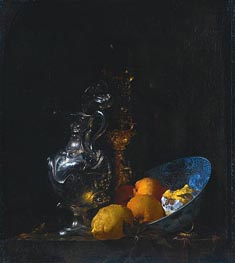
Still Life with Silver Jug c.1655/57
Oil Painting
$1780
$1780
Canvas Print
$70.66
$70.66
SKU: WKA-887
Willem Kalf
Original Size: 73.8 x 65.2 cm
Rijksmuseum, Amsterdam, Netherlands
Willem Kalf
Original Size: 73.8 x 65.2 cm
Rijksmuseum, Amsterdam, Netherlands
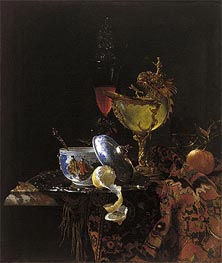
Still Life with Nautilus Cup 1662
Oil Painting
$1749
$1749
Canvas Print
$64.25
$64.25
SKU: WKA-888
Willem Kalf
Original Size: 79.4 x 67.3 cm
Thyssen-Bornemisza Museum, Madrid, Spain
Willem Kalf
Original Size: 79.4 x 67.3 cm
Thyssen-Bornemisza Museum, Madrid, Spain
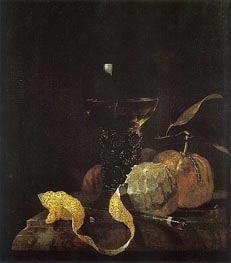
Still Life with Lemon, Oranges, and Glass of Wine c.1663/64
Oil Painting
$965
$965
SKU: WKA-889
Willem Kalf
Original Size: unknown
Staatliche Kunsthalle, Karlsruhe, Germany
Willem Kalf
Original Size: unknown
Staatliche Kunsthalle, Karlsruhe, Germany
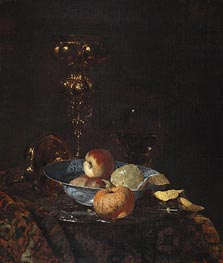
Still Life with Columbine Goblet c.1660
Oil Painting
$1680
$1680
Canvas Print
$71.78
$71.78
SKU: WKA-7833
Willem Kalf
Original Size: 57.7 x 49.2 cm
Detroit Institute of Arts, Michigan, USA
Willem Kalf
Original Size: 57.7 x 49.2 cm
Detroit Institute of Arts, Michigan, USA
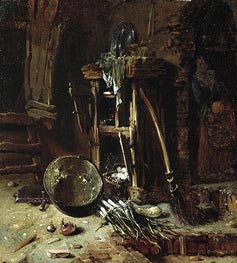
A Kitchen Corner c.1642/44
Oil Painting
$1206
$1206
Canvas Print
$50.46
$50.46
SKU: WKA-7834
Willem Kalf
Original Size: 26 x 23.8 cm
Detroit Institute of Arts, Michigan, USA
Willem Kalf
Original Size: 26 x 23.8 cm
Detroit Institute of Arts, Michigan, USA
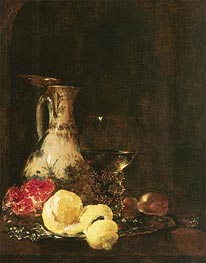
Still Life with Delft Jug 1653
Oil Painting
$1218
$1218
Canvas Print
$50.46
$50.46
SKU: WKA-7835
Willem Kalf
Original Size: 44.9 x 35.7 cm
Alte Pinakothek, Munich, Germany
Willem Kalf
Original Size: 44.9 x 35.7 cm
Alte Pinakothek, Munich, Germany
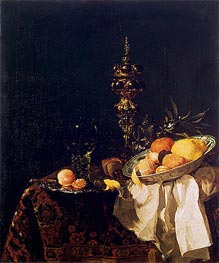
Dessert c.1653/54
Oil Painting
$2026
$2026
Canvas Print
$54.67
$54.67
SKU: WKA-7836
Willem Kalf
Original Size: 105 x 87.5 cm
The State Hermitage Museum, St. Petersburg, Russia
Willem Kalf
Original Size: 105 x 87.5 cm
The State Hermitage Museum, St. Petersburg, Russia
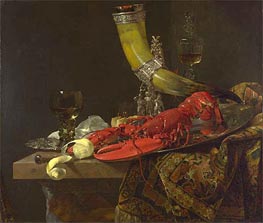
Still Life with Drinking Horn c.1653
Oil Painting
$2258
$2258
Canvas Print
$64.80
$64.80
SKU: WKA-7837
Willem Kalf
Original Size: 86.4 x 102.2 cm
National Gallery, London, United Kingdom
Willem Kalf
Original Size: 86.4 x 102.2 cm
National Gallery, London, United Kingdom
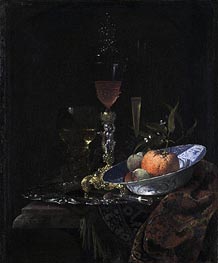
Wine Glass on a Gilded Silver Foot and a Bowl of Fruit 1663
Oil Painting
$1625
$1625
Canvas Print
$63.96
$63.96
SKU: WKA-7838
Willem Kalf
Original Size: 60.3 x 50.2 cm
Cleveland Museum of Art, Ohio, USA
Willem Kalf
Original Size: 60.3 x 50.2 cm
Cleveland Museum of Art, Ohio, USA
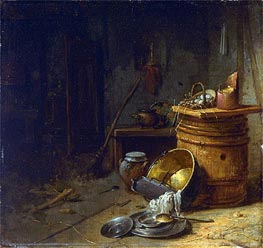
Kitchen c.1642
Oil Painting
$1204
$1204
Canvas Print
$50.46
$50.46
SKU: WKA-7839
Willem Kalf
Original Size: 24.8 x 24.9 cm
Philadelphia Museum of Art, Pennsylvania, USA
Willem Kalf
Original Size: 24.8 x 24.9 cm
Philadelphia Museum of Art, Pennsylvania, USA
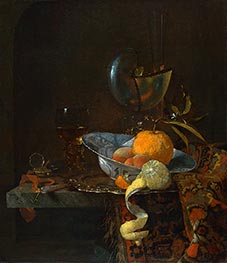
Still Life with Porcelain Bowl and Nautilus Cup 1660
Oil Painting
$1566
$1566
Canvas Print
$65.91
$65.91
SKU: WKA-17554
Willem Kalf
Original Size: 64 x 56 cm
Thyssen-Bornemisza Museum, Madrid, Spain
Willem Kalf
Original Size: 64 x 56 cm
Thyssen-Bornemisza Museum, Madrid, Spain
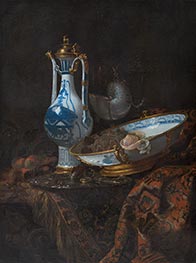
Still Life with Ewer and Basin, Fruit and Nautilus Cup c.1660
Oil Painting
$2148
$2148
Canvas Print
$57.02
$57.02
SKU: WKA-17555
Willem Kalf
Original Size: 111 x 84 cm
Thyssen-Bornemisza Museum, Madrid, Spain
Willem Kalf
Original Size: 111 x 84 cm
Thyssen-Bornemisza Museum, Madrid, Spain
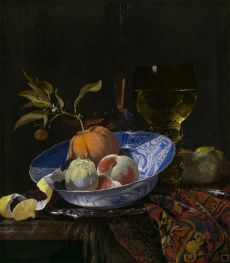
Still Life with Fruit in a Wan-Li Bowl 1664
Oil Painting
$1564
$1564
Canvas Print
$61.65
$61.65
SKU: WKA-19615
Willem Kalf
Original Size: 53 x 46 cm
Boston Museum of Fine Arts, Massachusetts, USA
Willem Kalf
Original Size: 53 x 46 cm
Boston Museum of Fine Arts, Massachusetts, USA